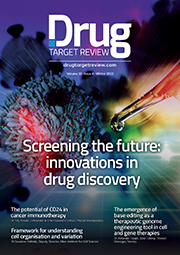Collaborative drug discovery: an update on the progress of such initiatives
Posted: 29 October 2013 | Sheraz Gul (Fraunhofer-IME SP)
Despite the ever increasing efforts being expended for drug discovery purposes, the number of approved drugs remains relatively static. A variety of explanations have been provided to explain this observation and initiatives to remedy this situation have been implemented. Many of these initiatives are still works-in-progress and whether these will yield a return-on-investment and ultimately be successful based upon their mandates is still unclear. A progress report for two of the major initiatives from the National Institute of Health and European Union are provided herein.
The National Institute of Health Molecular Libraries Program and the National Center for Advancing Translational Sciences
The National Institute of Health Molecular Libraries Program (MLP) was one of the earliest (established in 2004) and largest state-funded initiatives that intended to implement early stage drug discovery. There was a particular focus upon assay development and the screening of such assays against small molecule libraries, in a manner similar to that implemented within the pharmaceutical industry1. The initial plan of the MLP was to build a library of compounds and establish screening centres outside the pharmaceutical industry where many of these activities historically took place. The capital and resources required were significant and the vision was to perform two very different kinds of screens, namely functional screening where compounds would be evaluated against known targets as well as phenotypic screening where unbiased testing of compounds would take place in cell based assays without knowing their targets. This was a reasonable strategy as both types of approaches complement one another and a recent publication has highlighted the value of the more risky phenotypic screening approach2.
A notable effect of the MLP was to embed drug discovery within academia. The most significant findings of the MLP have been published in high ranking journals and compounds that have progressed in the drug discovery value chain, notably the publication of a chemically tractable new mechanism for controlling the cytokine storms that prove so deadly in pandemic influenza3, description of a novel, tractable mechanism for the treatment of type 2 diabetes4, elucidation of a high-resolution crystal structure of the S1P1 receptor5 and production of over 250 probes (small molecules that can be used as research tools to interrogate previously inaccessible targets, if not as drugs themselves), directly responsibility for at least 342 scientific publications6. The screening results have been deposited in a publicly available database, PubChem, which is accessed by a large number of users and is a valuable resource of assays and screens and associated data7. A side-effect of the MLP is that most major universities now have internal drug discovery centres that attempt to translate basic research findings into the drug discovery value chain8. Despite these successes, a notable downside of the MLP is that the attrition of projects was significant in terms of delivering compounds that would be considered to meet the criteria for progression within the pharmaceutical industry9. The outputs of the MLP are valuable and publically available and include, full reports of the probes that have been delivered10, detailed reports of projects e.g. caspase-111 and 12-lipoxygenase12 and publically available peer-reviewed publications e.g. assays to search for inhibitors of Schistosoma mansoni thioredoxin glutathione reductase13-15.
The rest of this article is restricted - login or subscribe free to access
 Thank you for visiting our website. To access this content in full you'll need to login. It's completely free to subscribe, and in less than a minute you can continue reading. If you've already subscribed, great - just login.
Thank you for visiting our website. To access this content in full you'll need to login. It's completely free to subscribe, and in less than a minute you can continue reading. If you've already subscribed, great - just login.
Why subscribe? Join our growing community of thousands of industry professionals and gain access to:
- quarterly issues in print and/or digital format
- case studies, whitepapers, webinars and industry-leading content
- breaking news and features
- our extensive online archive of thousands of articles and years of past issues
- ...And it's all free!
Click here to Subscribe today Login here
Related topics
Cell-based assays, Drug Discovery, Enzymes, Gene Testing, Genomics
Related organisations
Fraunhofer-IME SP, GSK (GlaxoSmithKline)
Related people
Sheraz Gul







